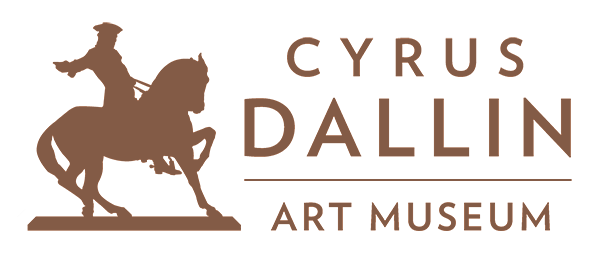News
July 25, 2022
New Indigenous Peoples Gallery Opens to the Public
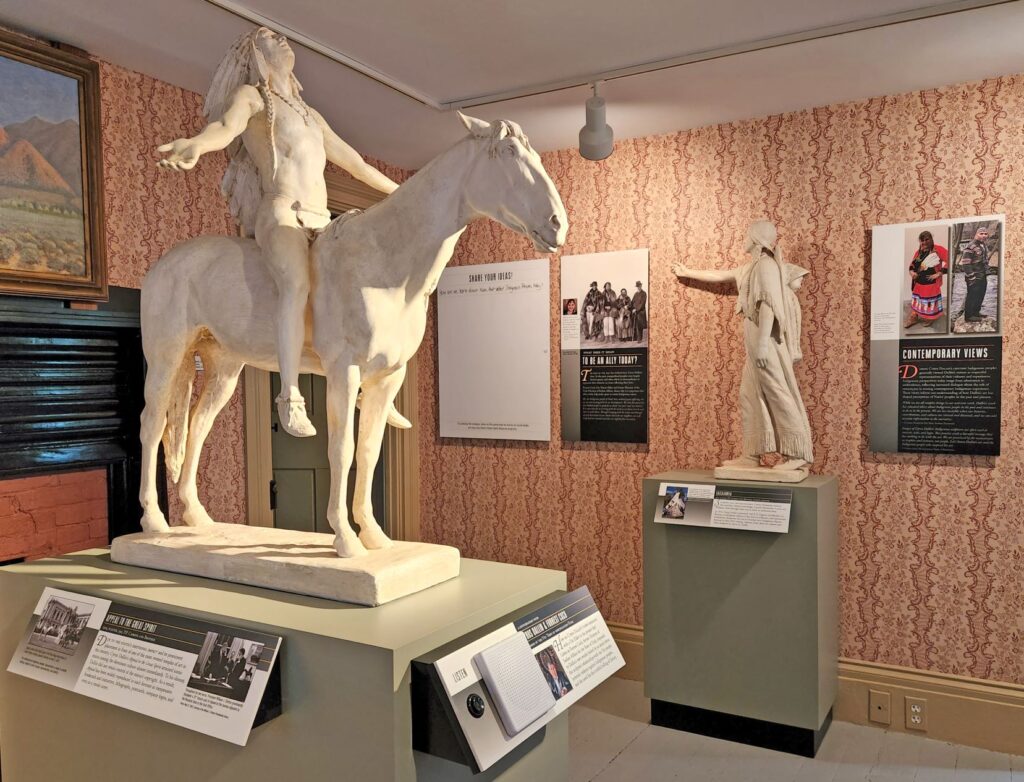
Dallin Museum staff, directors, and trustees are thrilled to share that the work on the new Indigenous Peoples Gallery and entry hall signage is complete. The Museum reopened on July 23, and our regular Saturday and Sunday 12-4 pm schedule has resumed.
The Dallin Museum is a small, community museum dedicated to a sculptor of national significance whose work elicits important, and sometimes difficult, conversations about race and representation. In particular, Dallin’s Appeal to the Great Spirit at the MFA, Boston has become a flashpoint for public dialogue around stereotypes, Indigenous erasure, and settler colonialism. The Museum’s new Indigenous Peoples Gallery explores these important topics in a way that honors past and present Indigenous perspectives and encourages continued learning.
Museum Director and Curator Heather Leavell developed the gallery’s interpretive themes and text in close consultation with Elizabeth Solomon, Elder of the Massachusett Tribe at Ponkapoag and Forrest Cuch, Elder of the Ute Tribe and former Director of Indian Affairs for the State of Utah. Both Solomon and Cuch read all exhibit text for accuracy and sensitivity.
Thematic panels explore Dallin’s work in the context of his time, artistic intentions, and advocacy, with a focus on his close relationships with Indigenous people and his vehement public criticism of U.S. genocidal policies. Text rails accompanying sculptures highlight perspectives on Dallin’s art by his Indigenous contemporaries. The exhibit also centers the stories of such influential figures as Chief Washakie (Eastern Shoshone), Francis LaFlesche (Omaha), Zitkála -Šá (Yankton Dakota), and Sacajawea (Lemhi Shoshone).
Additional thematic panels explore contemporary Indigenous views on Dallin’s art, the evolving role of the ally, Native stereotypes, and the importance of Indigenous-centered education. Contributors include Faries Gray, Sagamore of the Massachusett Tribe at Ponkapoag; Claudia Tekina-ru Fox Tree, Arawak (Yurumein) educator, and Forrest Cuch.
Additional highlights include:
• An audio conversation between Cyrus Dallin (his words read by a voice actor) and Forrest Cuch that reveals a fascinating synchronicity in views on Ute culture, the history of violence against Indigenous peoples, and the need for the truthful telling of history. Listen to the recording here.

• A white board with the question, “How can non-Native people learn about issues that are important to Indigenous people?” Visitors are invited to write down their ideas.
• A “Whose Land Are you on?” panel written by Elizabeth Solomon that prompts visitors to contemplate their presence on Indigenous lands.
• A new, wall-length panel in the Museum’s entry illustrating Dallin’s art and legacy through quotes by the sculptor’s students at the Massachusetts Normal Art School, his friend Chief LeRoy Perry (Aquinnah Wampanoag), and Jonathan Fairbanks, Founder of the American Decorative Arts and Sculpture Department at the Museum of Fine Arts, Boston.
“This project represents the culmination of many years of research on Cyrus Dallin’s work as an ally and Indigenous rights advocate. It also reflects the Museum’s ongoing commitment to fostering dialogue on issues that are important to Indigenous people and impact all of us,” says Heather Leavell.
The Museum is grateful to the Massachusetts Office of Travel and Tourism and the Freedom’s Way National Heritage Area Partnership Grant Program for supporting this project. State funds were facilitated by Representative Sean Garballey, who worked with a team from the Museum that included the Chair of the Friends of the Dallin Museum, Stephen Gilligan, and President of the Board of Directors, Geri Tremblay.
March 31, 2022
Remembering Bob “Crombie” S. Dallin (1935-2021)
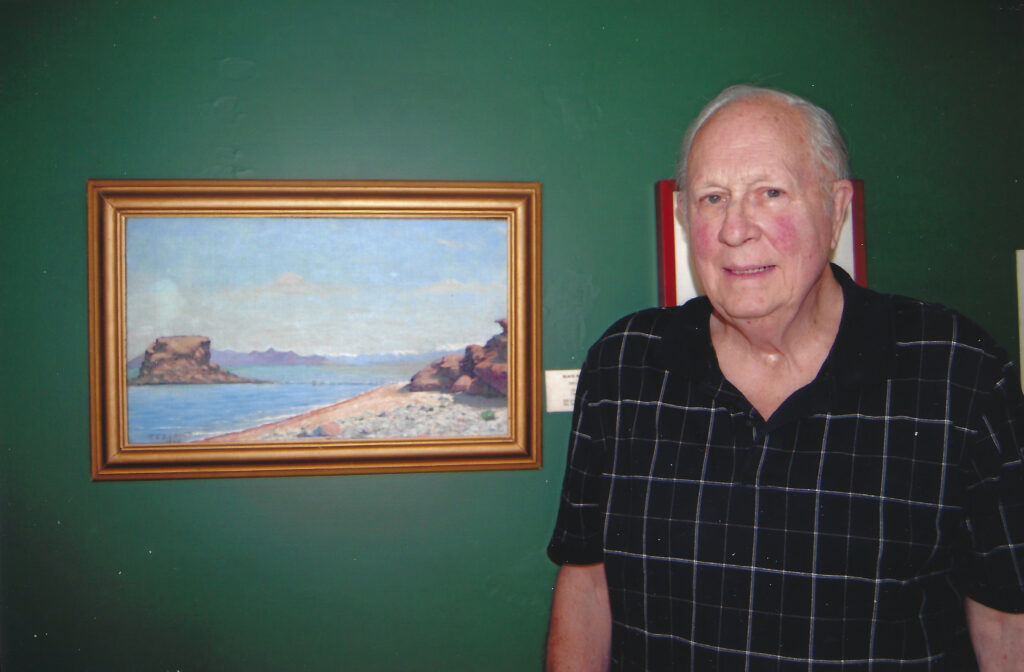
A treasured Dallin Museum supporter and friend, Bob “Crombie” S. Dallin, passed away on August 18, 2021 at the age of 86. Crombie was a grandson of Cyrus and Vittoria Dallin. Born in Boston in 1935, he was the son of Cyrus’s youngest child Lawrence and his wife Mary “Polly” Sawyer Dallin. Lawrence (1905-1989) was a successful entrepreneur and helped manage his parents’ business affairs. He was instrumental in negotiating the terms of his father’s contract with the City of Boston to erect the Paul Revere Monument in 1940.
Bob earned his engineering degree from Tufts University and went on to work on various missile defense programs throughout the U.S., most notably with General Dynamics Electric Boat Weapons division in Groton, MA, which focused on support for the Trident ballistic missile submarine program. He had also spent time in the 1950s serving with the Civil Defense Agency. As an avid reader, real estate investor, licensed pilot, 50-ton master captain’s license holder, scuba diver, and lover of all things mechanical, Bob was always eager to challenge the mind.
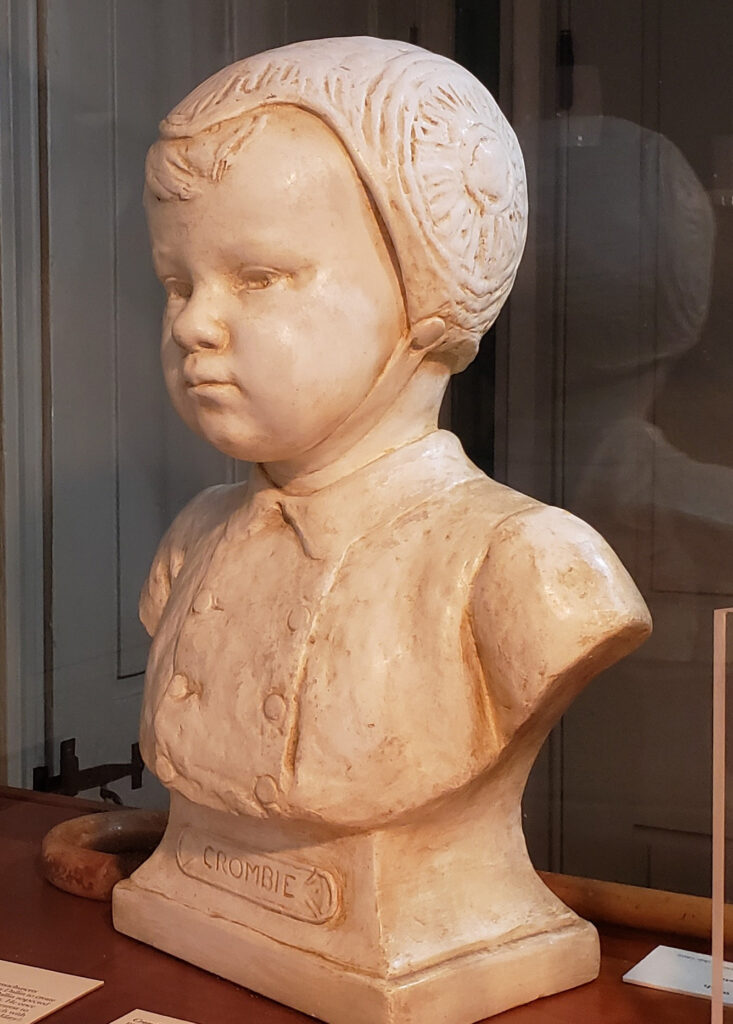
“As kids we had our moments, but as we grew into adults, there was a strong bond that was always there,” recalls Crombie’s sister Judi Dallin Cutts. “Bob was intelligent, kind and generous to all. He was old enough to remember our grandfather, Cyrus. I heard many tales about visiting Cyrus’s studio and playing games and watching him as he worked on his sculptures.”
Dallin Museum co-founder and Board of Directors President, Geri Tremblay reminisced, “Bob was a great personal friend to Don and me as well as a generous contributor to the Museum. We met him in 1998 at the opening of the Dallin Museum’s first gallery. At that event Bob donated Crombie Sawyer Dallin, a plaster bust of himself at a very young age.”
Bob continued to enrich the Museum’s collection with donations of the Cyrus Dallin painting Black Rock, Salt Lake (1892) and a stained-glass portrait of the sculptor by Arthur Dallin. His support has been crucial in our work to promote the legacy of the Dallin family. He is dearly missed.
February 7, 2022
Dallin Museum Receives $55K in Grants for Indigenous Peoples Gallery Redesign and Archives Preservation
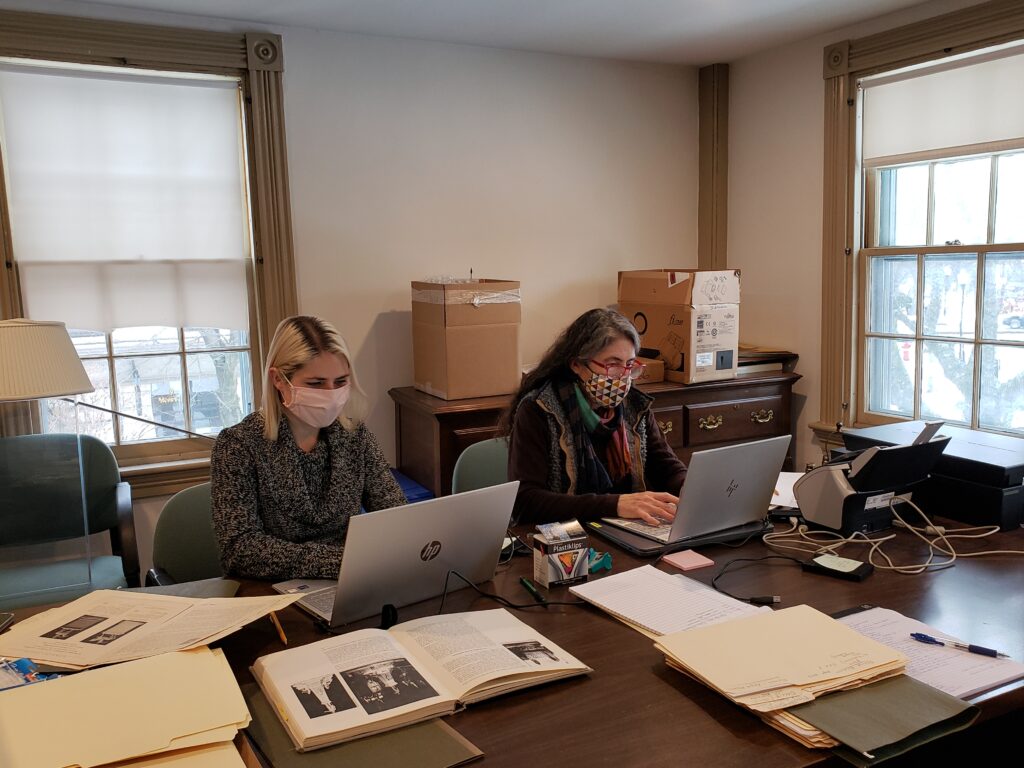
The Cyrus Dallin Art Museum has received a $50,000 grant from the Commonwealth of Massachusetts via the Massachusetts Office of Travel and Tourism. These funds enable the museum to redesign its entryway and the Indigenous Peoples gallery, as well as digitize the museum’s archives and build an online searchable database. Both projects are expected to be completed by May.
“This grant is truly transformational for the Dallin Museum. These high-priority projects will enhance the museum’s inclusivity and accessibility and promote continued community conversations about the impact of Cyrus Dallin’s work in both the past and present,” says Heather Leavell, museum director/curator.
The grant was facilitated by Representative Sean Garballey, and assisted by a team from the museum including Chair of the Friends of the Dallin Museum Stephen Gilligan, Board of Directors President Geri Tremblay, Nancy Blanton, Dan Johnson, Andrew Jay, James Charnley, and Heather Leavell.
“The Dallin Museum sincerely thanks Representative Garballey for his leadership in securing this important grant,” says Tremblay. The Museum is also grateful to the Town of Arlington and the Municipal Board of Trustees for their ongoing collaboration and support.
Redesign of Entry and Indigenous Peoples Gallery

The Museum is honored to have received an additional $5,000 Partnership Grant from Freedom’s Way National Heritage Area to support the redeisgn of its entry and Indigenous Peoples Gallery!
Museum staff are working with Indigenous stakeholders to ensure that these spaces accurately represent the histories, cultures, and resilience of those who were the subjects of Cyrus Dallin’s works. This project will also align the Museum’s interpretive themes with its ongoing educational programs focused on Dallin’s advocacy and Indigenous views on history and healing. The result will be a more inclusive and welcoming environment for visitors that reflects multiple experiences and perspectives.
Museum staff have engaged Proun Design of Somerville, Mass. to assist with concept development and design. The project scope includes revised floor plans, new pedestals, refreshed paint finishes, colorful window graphics, interpretive panels, an audio program, and an interactive display prompting visitors to make connections between the past and present. These improvements will enhance visitor experience by making the spaces more engaging, visitor-centered, and self-directed.
Archive Digitization and Access
The Dallin Museum’s archive is the country’s leading repository for historical research on the life and legacy of Cyrus Dallin and the Dallin family. It comprises more than 6,000 items including photographs, correspondence, sketches, journals, exhibition catalogs, and news clippings related to Cyrus Dallin, as well as poems and manuscripts written by his wife Vittoria Dallin.
The Museum is working with Museum & Collector Resource of Concord, Mass. to scan and catalog its archive, and provide public access to these materials via a searchable database at Dallin.org. This project will preserve these invaluable cultural resources and make them accessible to community members, local historians, scholars, and genealogists seeking to better understand the legacy of Cyrus Dallin and the Dallin family in Arlington and beyond.
For more information about these projects, please contact Museum director/curator Heather Leavell at hleavell@dallin.org.
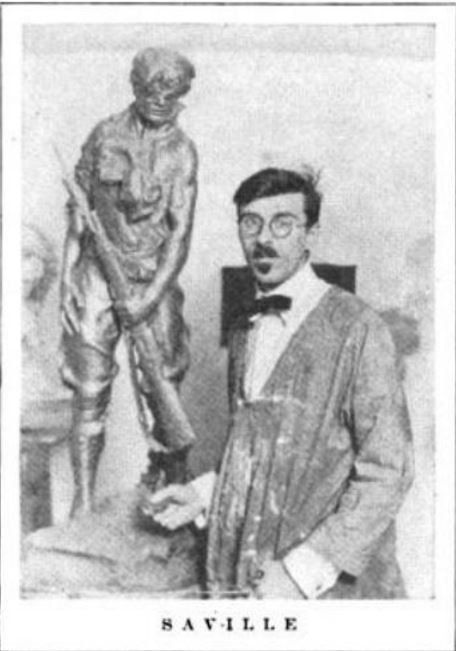
October 20, 2021
New Research on Cyrus Dallin’s Student: Sculptor Bruce Wilder Saville (1893-1939)
By Claudia Haines, Dallin Museum Intern
It’s a well-established fact that Cyrus Dallin was, in addition to being a talented artist, a capable and beloved teacher: affectionately known as “Cyrus the Great” by the hundreds of students he mentored during his four-decade tenure at the Massachusetts Normal Art School (now the Massachusetts College of Art and Design, or MassArt), Dallin’s wise and gentle approach to teaching inspired a love of sculpture in innumerable aspiring artists. But up until recently, little has been known about Dallin’s students, even those who went on to become renowned professional artists themselves. My research this summer has aimed to shed new light on a few of Dallin’s mentees. A particularly interesting figure, I think, is Bruce Wilder Saville.
Saville was born to George and Caroline Saville in Quincy, Massachusetts in 1893. After graduating from Quincy High School, he enrolled in MassArt, where he found his first mentor in Dallin. Saville then spent time studying sculpture in France, but with the outbreak of World War I in 1914, he paused his artistic career in order to serve with the French Ambulance Corps, later transferring to the U.S. Army Corps of Engineers when the United States entered the war. In a 1919 article in the Boston Globe, Saville reflected on his experiences in wartime France, commenting that while he was generally happy during his military service, “It was nothing but war every day. That was what we went in for.”
Upon the end of WWI in 1918, Saville returned to Quincy and resumed his artistic practice, continuing his studies in the studio of Theodora Alice Ruggles Kitson. After a brief stint in New York City, Saville moved to Columbus, Ohio, spending most of the 1920s there. He was appointed head of the Art Department at Ohio State University in 1921, and also taught sculpture for several years at the Columbus Art School. In the 1930s, Saville relocated to Santa Fe, New Mexico, where he spent the rest of his life. He passed away in 1939 following a difficult bout of influenza.
Over the course of his career, Saville proved to have a lot in common with his original mentor, Cyrus Dallin. Like Dallin, and perhaps also inspired by his own wartime experiences, Saville produced a number of celebrated memorial sculptures, including the Peace and Victory Monument (Glens Falls, NY, 1927), the Doughboy Memorial, Quincy, MA, 1924), and Peace (Columbus, OH, 1922). He, like Dallin, was also an accomplished portrait sculptor of both historical and contemporary figures. A notable work in this genre is Saville’s 1926 bronze relief honoring John and John Quincy Adams at Merrymount Park in Quincy, MA.
Another commonality between the two artists is their shared interest in Native American themes: both men produced several sculptures inspired by their interactions with Indigenous communities (Dallin in his native Utah and Saville in New Mexico). Saville’s Buffalo Dance (Pueblo Indian), Hopi Snake Dance, and Pueblo Indian Deer Dancers are all preserved today in the New Mexico Museum of Art. A more complete list of Saville’s extant works can be found on the Smithsonian American Art Museum’s Art Inventories Catalog, as well as the New Mexico Museum of Art’s online catalog.
Clearly, Saville was deeply impacted by his years studying under Cyrus Dallin, both in his work and in his life. He is only one member of an entire generation of artists whose careers were shaped by Dallin’s teaching. Hopefully, further research will shed even more light on Dallin’s many students, and the ways in which they carried on his artistic legacy through their own work.
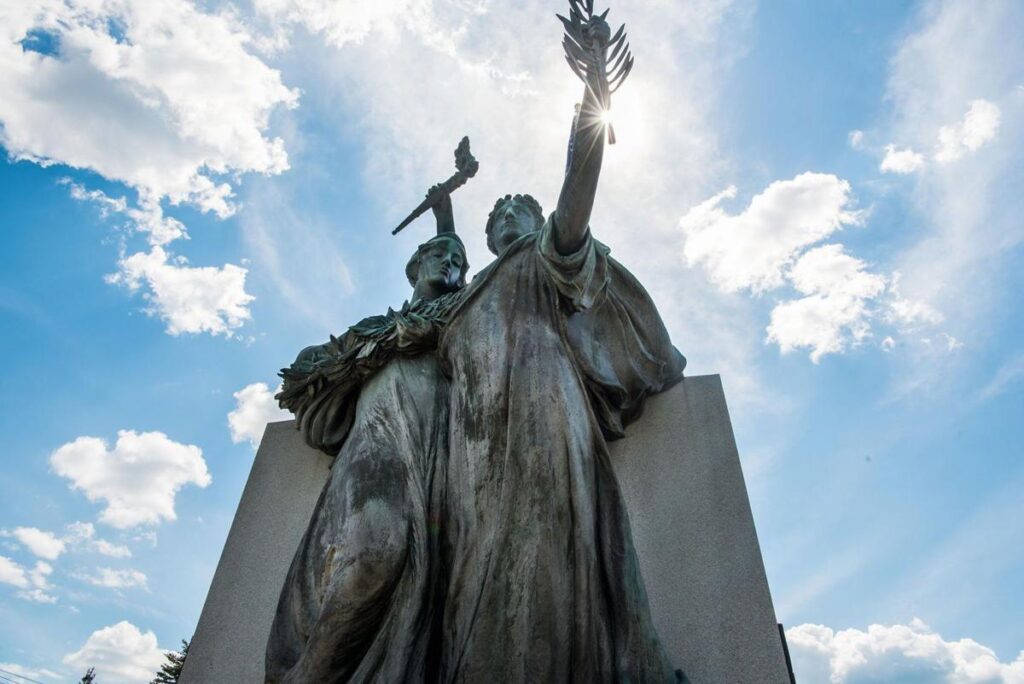
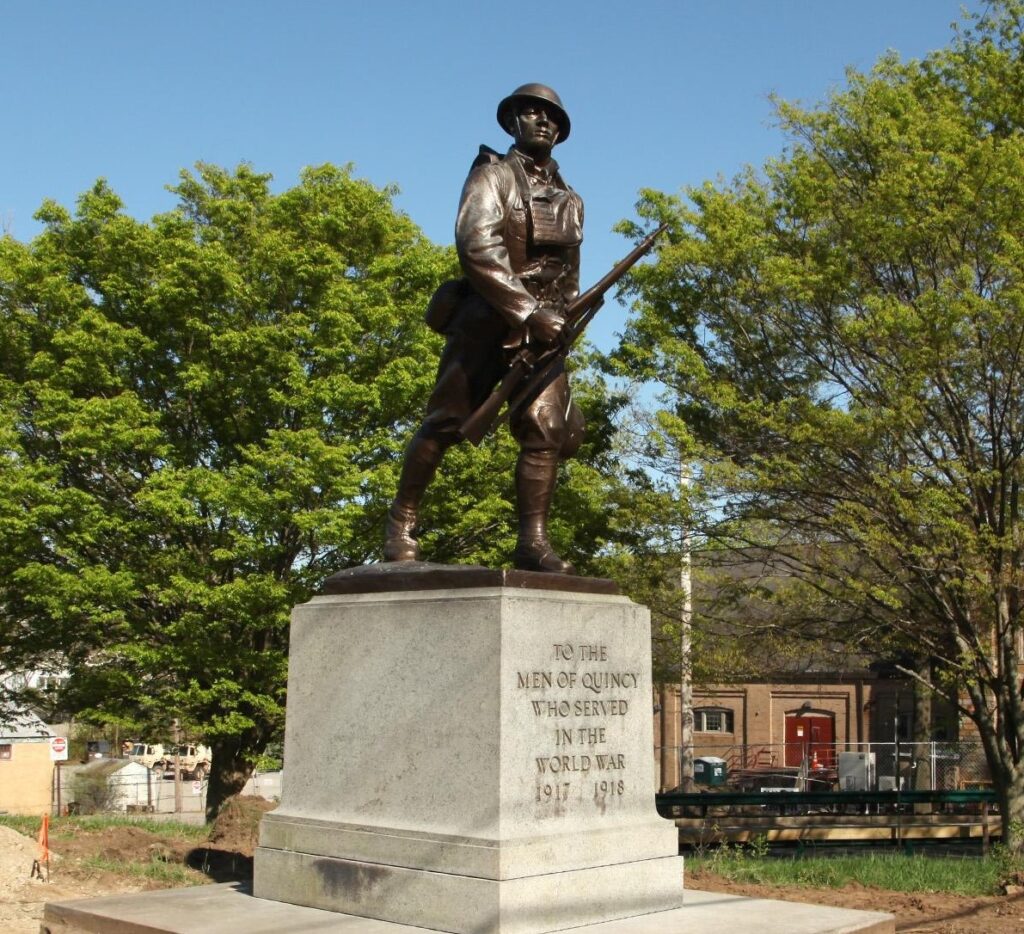
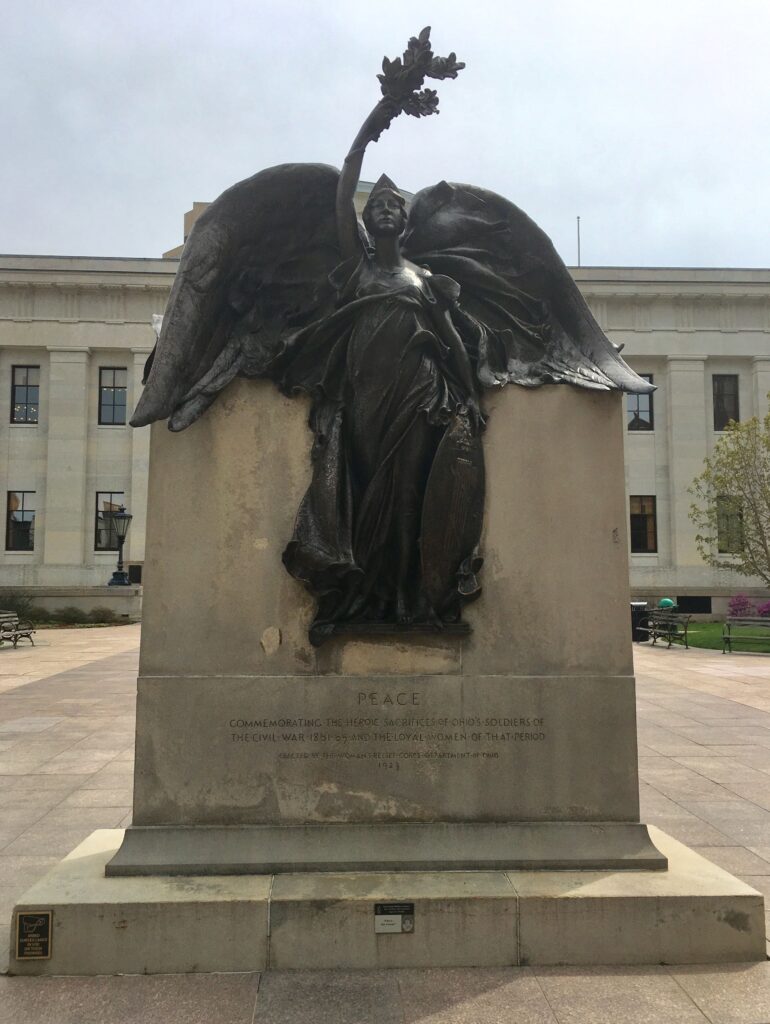
Newsletter Archive
Our Spring 2020 issue of The Scout is full of exciting news and updates. Read about the Arlington Chamber of Commerce’s nomination of James McGough and Geri Tremblay as Citizens of the Year and our recent acquisition of a rare self portrait of Cyrus Dallin and a plaster sculpture group entitled The Last Council. Learn about a previously unknown seal designed by Dallin for Browne & Nichols School in Cambridge (now Buckingham, Brown & Nichols) and a generous grant from the Church of Jesus Christ of Latter-day Saints Foundation. Explore our new virtual learning resources and enjoy highlights and photos from our winter programs.
Past Issues:
The Scout, Fall/Winter 2019. Highlights: recap of visit with Lakota youth from the Pine Ridge Reservation, remembering museum treasurer Paul McGaffigan, spotlight interview with Barry Sloane and Linda Sloane Kay of Century Bank, and Art on the Green recap.
The Scout, Summer 2019. Highlights: Acquisition of a rare portrait by Dallin entitled Mrs. Hall’s Letter, Whittemore Park Revitalization Plan, generous gift from the Joan Pearson Watkins Revocable Trust, and MFA symposium recap.
The Scout, Winter 2018/19. Highlights: 20th anniversary celebration recap, unveiling of new paintings exhibit and portrait bust of Charles Lindbergh, spotlight interview with Coley Harden of Winchester Co-operative Bank, and remembering longtime Select Board member and Museum champion Kevin Greeley.
The Scout, Summer 2018. Highlights: New research on Dallin’s activism for the rights of Native peoples, sneak peak at Dallin’s bust of Charles Lindbergh, and Town of Arlington-funded restoration of Menotomy Hunter and Robbins Memorial Flagstaff.
The Scout, Fall 2018. Highlights: Jim McGough and the founding of the Dallin Museum, Lakota YouthStay visit, Summer Soiree recap, and Spotlight Interview with Rob Mirak of Mirak Automotive Group.
